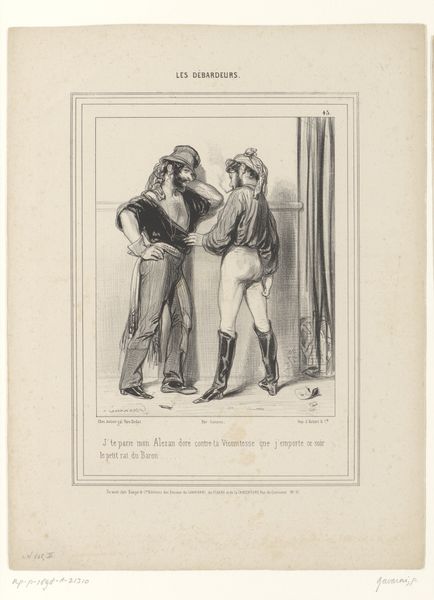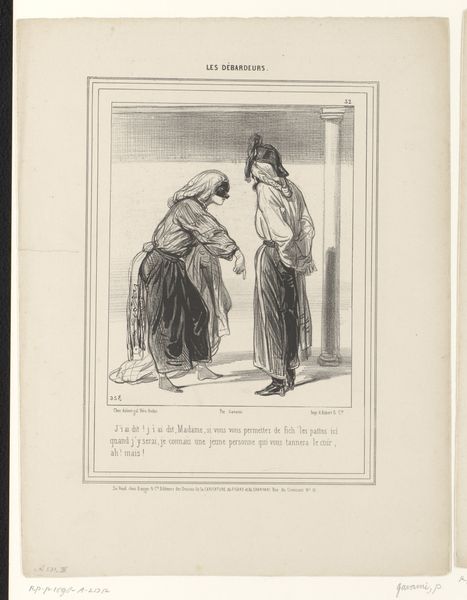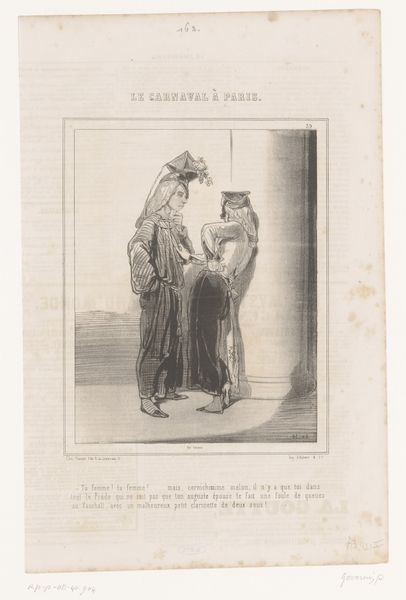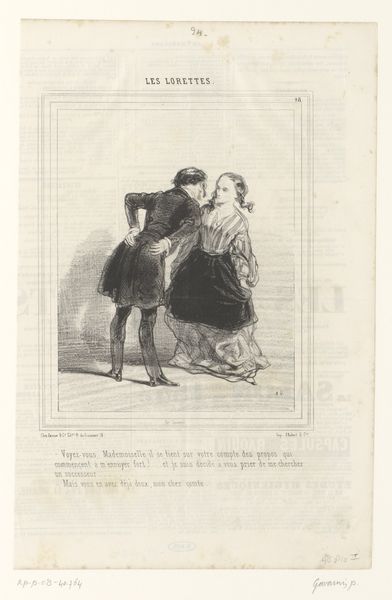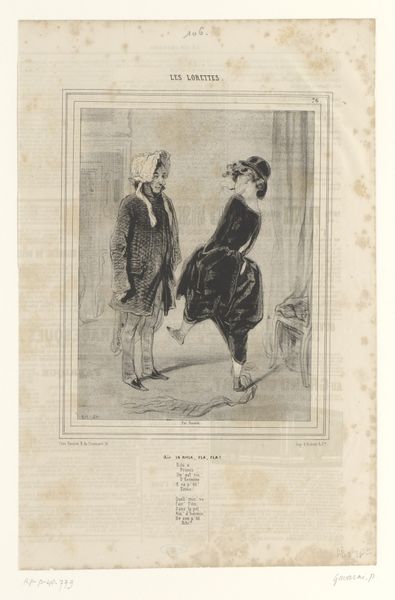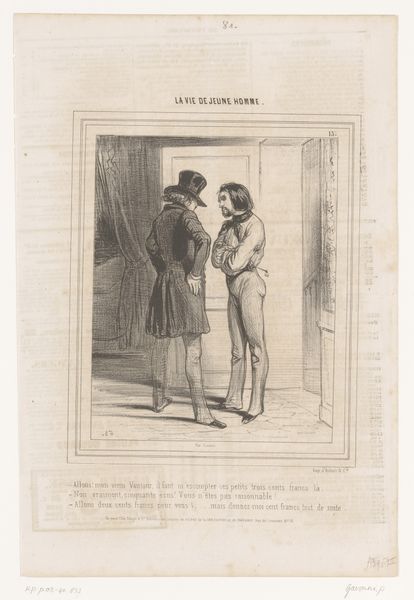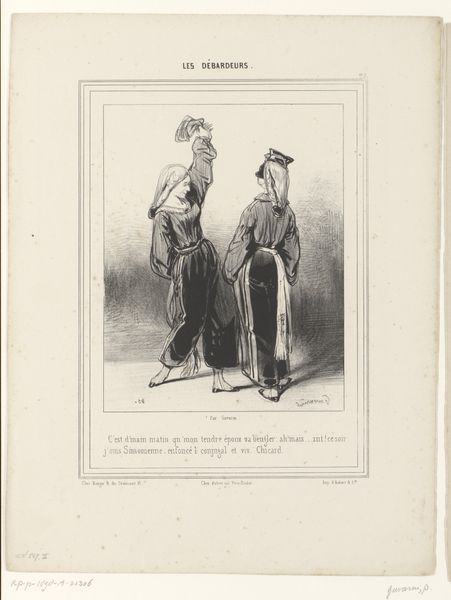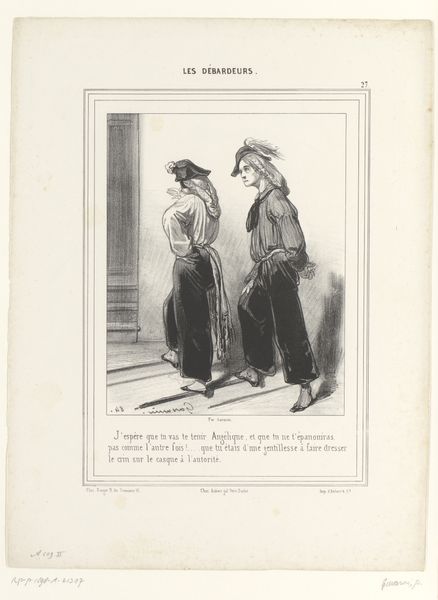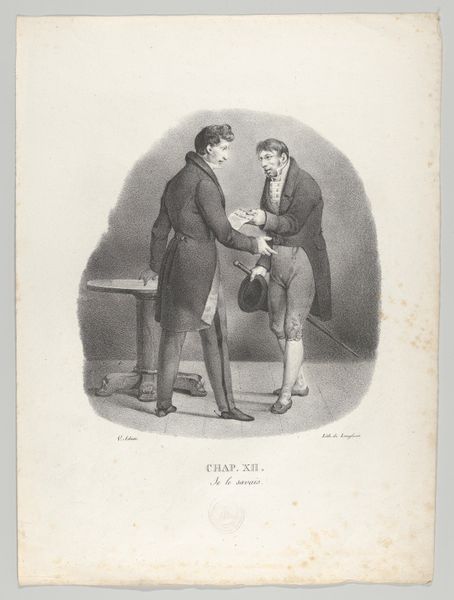
print, engraving
#
portrait
# print
#
caricature
#
old engraving style
#
figuration
#
genre-painting
#
engraving
Dimensions: height 359 mm, width 278 mm
Copyright: Rijks Museum: Open Domain
Curator: Here we have "Two Fashionable Women Waiting to Go Out," an engraving by Paul Gavarni, created around 1841. What strikes you first about it? Editor: Immediately, I see a study in contrasts. Look at the stiff formality of the room versus the ready-to-wear appearance of these figures; they're almost defiant, rejecting high art conventions by celebrating quotidian life, fashion, and social interaction through mass-produced printed matter. Curator: I find myself wondering about their destination and their emotions. One's posture looks almost combative, arms crossed tightly, while the other is looking back down. Are they friends about to paint the town red, or are their plans about to fall apart? There's a real sense of implied narrative, isn't there? Editor: Definitely, that implicit story pulls me in. It’s the story of how the emerging commercial print media starts addressing and influencing social fashion codes. Through an engraving, a relatively available format at the time, we witness the making of a stylish, fashionable Parisian woman who probably consumed Gavarni’s imagery. Curator: Interesting. I also sense the beginning of our obsession with capturing a single moment and drawing enormous narratives from it, it feels cinematic. And you’re right – thinking of this engraving as mass media – there's an underlying thread between commodification, presentation, and accessibility to consider here. The fashion, of course, speaks of status and belonging but maybe also anxiety... Editor: Yes, especially regarding gender. Those exaggerated baggy trousers contrast so starkly with the restrictive ideals of the time, that they are both challenging and reflecting society's perceptions of femininity. This is where artistic practice starts acting as social critique, reproduced en masse and distributed broadly. Curator: I'd almost say this feels surprisingly contemporary, this ability to critique culture in culture and making that critique almost seamlessly consumable. Editor: Exactly! The way Gavarni embraced the medium of engraving to mass produce social commentary... Curator: Ultimately, this image becomes less about the destination and more about the waiting, and reflecting, maybe reconsidering... Editor: Indeed. A moment frozen, replicated and sold - a powerful testament to the industrial revolution transforming the cultural sphere.
Comments
No comments
Be the first to comment and join the conversation on the ultimate creative platform.

